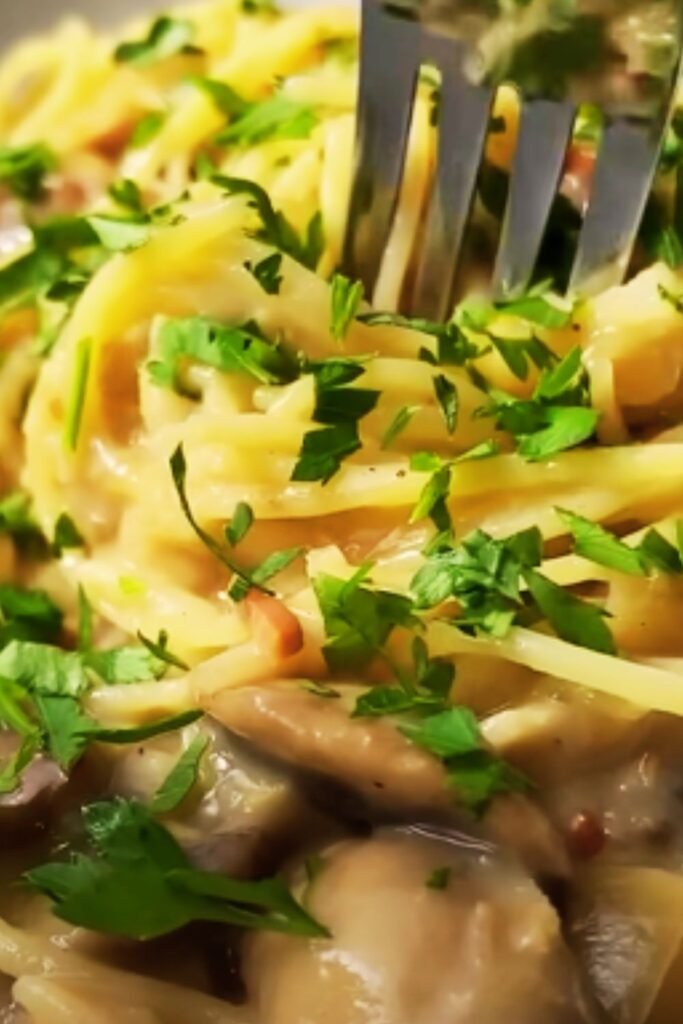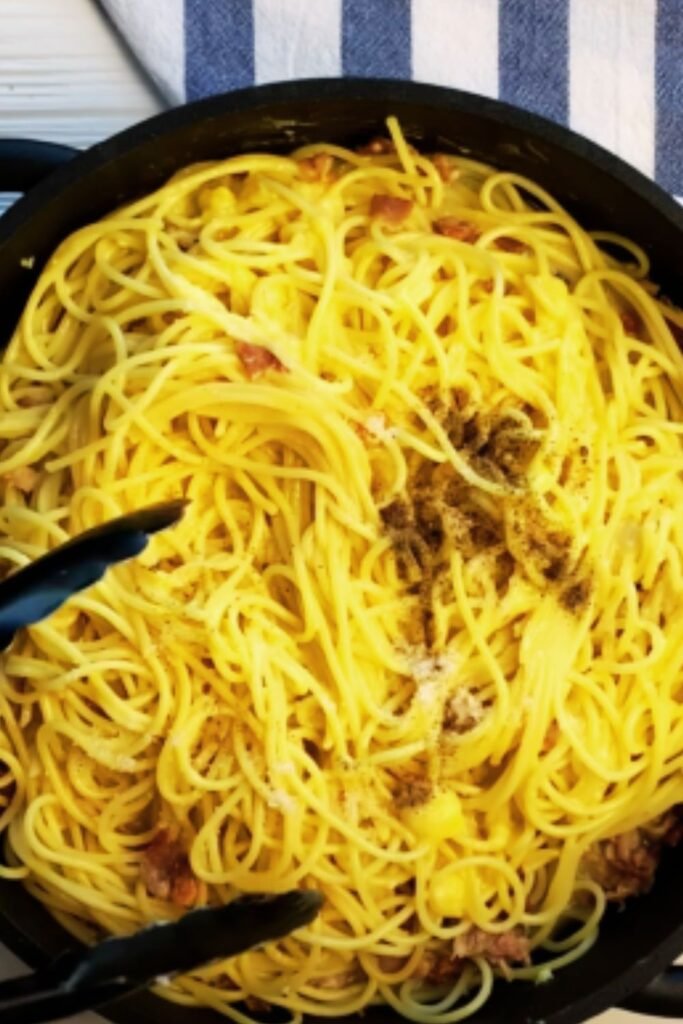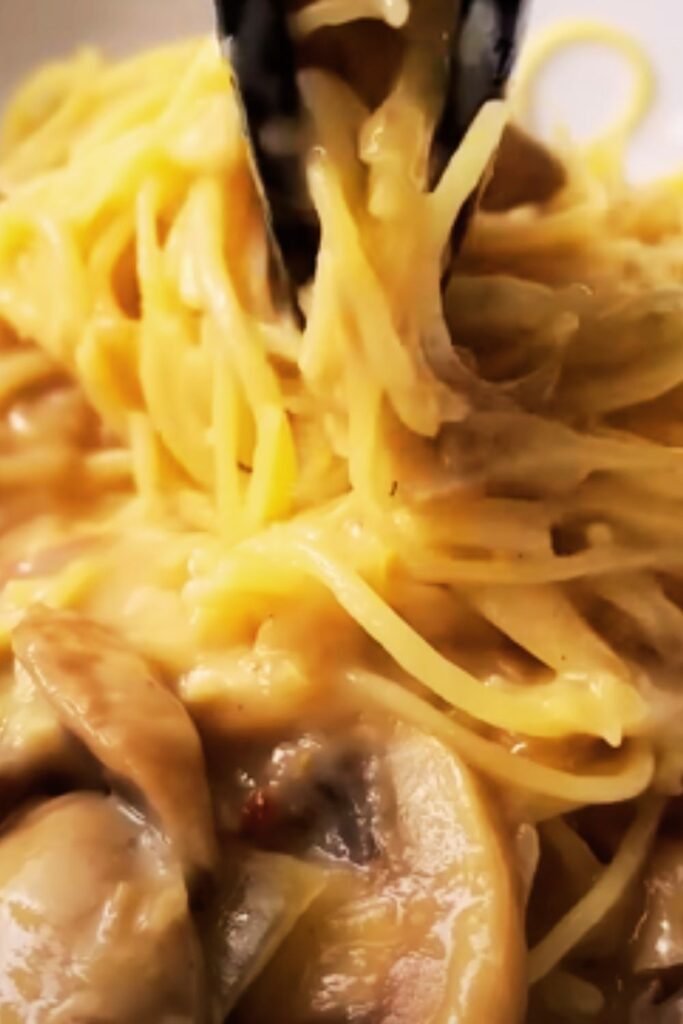There’s something magical about the moment when hot pasta meets egg and cheese to create that silky, luxurious sauce that’s become synonymous with authentic carbonara. I’ve spent years perfecting this recipe, and today, I’m sharing all my secrets to help you create restaurant-quality carbonara in your own kitchen.
The Heart of Roman Cuisine
Every time I walk through the bustling streets of Rome’s Trastevere neighborhood, the aroma of freshly made carbonara wafting from tiny trattorias reminds me why this dish has captured hearts worldwide. This recipe isn’t just about combining ingredients – it’s about understanding the soul of Italian cooking, where simplicity meets perfection.
Essential Ingredients

For 4 servings, you’ll need:
| Ingredient | Amount | Notes |
|---|---|---|
| Spaghetti or Rigatoni | 400g (14 oz) | High-quality bronze-die pasta recommended |
| Guanciale | 150g (5.3 oz) | Diced into 1cm cubes |
| Pecorino Romano | 100g (3.5 oz) | Freshly grated |
| Parmigiano-Reggiano | 50g (1.8 oz) | Freshly grated |
| Fresh Eggs | 4 whole + 2 yolks | Room temperature |
| Black Pepper | 2 tsp | Freshly cracked |
| Sea Salt | To taste | For pasta water |
The Perfect Technique
I’ve learned that achieving that creamy, silky sauce without scrambling the eggs requires attention to detail. Here’s my step-by-step method:
Preparation Phase
- Remove eggs from refrigerator 30 minutes before starting
- Grate cheeses and combine them in a bowl
- Cut guanciale while cold for precise cubes
- Have all ingredients measured and ready before beginning
Cooking Process

| Step | Temperature | Time | Key Points |
|---|---|---|---|
| Pasta Cooking | Rolling boil | 8-10 minutes | Reserve 1½ cups pasta water |
| Guanciale Rendering | Medium-low | 8-10 minutes | Until golden, not crispy |
| Egg Tempering | Off heat | 1-2 minutes | Gradually add pasta water |
| Final Mixing | Off heat | 1-2 minutes | Work quickly but carefully |
Detailed Instructions
- Start with your pasta water. Use 4 liters of water and 2 tablespoons of salt. The water should taste like the sea.
- While water heats, prepare your sauce base:
- In a large bowl, whisk whole eggs and yolks until combined
- Add cheese mixture gradually while whisking
- Add generous freshly ground black pepper
- Set aside at room temperature
- Render the guanciale:
- Use a cold, large skillet
- Cook over medium-low heat until fat renders and meat turns golden
- Remove from heat but keep warm
- The crucial assembly:
- Cook pasta until perfectly al dente
- Reserve 1½ cups pasta water before draining
- Working quickly, add ½ cup hot pasta water to egg mixture while whisking
- Add drained pasta to guanciale pan
- Pour tempered egg mixture over pasta
- Toss vigorously with tongs until sauce thickens
Common Mistakes to Avoid

| Issue | Cause | Solution |
|---|---|---|
| Scrambled Eggs | Too much heat | Keep pan off heat when adding egg mixture |
| Dry Sauce | Insufficient pasta water | Reserve more water than needed |
| Clumpy Cheese | Added too quickly | Gradually incorporate while stirring |
| Chewy Guanciale | Cooked too hot | Use medium-low heat, take time |
Serving Suggestions
I love serving carbonara immediately in warmed bowls. Offer extra grated cheese and black pepper at the table. A crisp green salad with a light vinaigrette makes the perfect accompaniment.
Storage and Reheating
While carbonara is best enjoyed fresh, leftovers can be stored in an airtight container for up to 2 days. To reheat:
- Add 2 tablespoons of water per portion
- Heat gently in a non-stick pan
- Stir constantly until warmed through
- Add fresh cheese if needed
Variations and Substitutions
While purists might disagree, here are some acceptable modifications:
| Ingredient | Traditional | Possible Substitute |
|---|---|---|
| Guanciale | Traditional | Pancetta (never bacon) |
| Pecorino Romano | Traditional | More Parmigiano-Reggiano |
| Spaghetti | Traditional | Rigatoni or Bucatini |
Frequently Asked Questions
Q: Can I make carbonara without raw eggs?
A: Traditional carbonara requires raw eggs that cook gently from the residual heat. If you’re concerned, use pasteurized eggs.
Q: Why did my sauce turn out watery?
A: This usually happens when the pasta isn’t hot enough or there’s too much pasta water. Make sure to work quickly and start with less water than you think you need.
Q: Can I add garlic or onion?
A: Traditional Roman carbonara doesn’t include either. While you can add them, it becomes a different dish entirely.
Q: How do I prevent the eggs from scrambling?
A: The key is tempering the eggs with pasta water and keeping the pan off direct heat when combining everything.
Q: Can I make this ahead of time?
A: Carbonara is best served immediately. The sauce can become thick and lose its silky texture when made ahead.
Nutritional Information
Per serving (approximately):
| Nutrient | Amount |
|---|---|
| Calories | 850 |
| Protein | 35g |
| Carbohydrates | 85g |
| Fat | 42g |
| Fiber | 3g |
| Sodium | 890mg |
Pro Tips for Perfect Carbonara
- Temperature control is crucial:
- Room temperature eggs
- Hot pasta
- Warm (not hot) guanciale
- Heated serving bowls
- Cheese matters:
- Always grate fresh
- Use authentic aged cheeses
- Bring to room temperature
- Pasta wisdom:
- Cook until just before al dente
- Save more pasta water than you think you’ll need
- Don’t rinse the pasta
Remember, carbonara is about confidence and timing. Don’t be discouraged if your first attempt isn’t perfect – each time you make it, you’ll develop a better feel for the process. The key is to respect the simplicity of the dish and let the quality ingredients shine through.
I hope this recipe helps you create the carbonara of your dreams. With practice, you’ll be making this classic dish like a true Roman!


